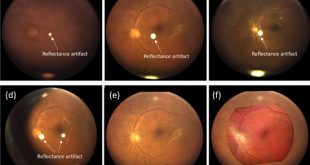Journal Reference
ACS Nano, 2015, 9 (6), pp 6242–6251.
Yang Huang1, Yan Huang1, Minshen Zhu1, Wenjun Meng1, Zengxia Pei1, Chang Liu2, Hong Hu2, Chunyi Zhi1,3
[expand title=”Show Affiliations”]- Department of Physics and Materials Science,City University of Hong Kong, 83 Tat Chee Avenue, Kowloon, Hong Kong 999077, China
- Institute of Textiles and Clothing,The Hong Kong Polytechnic University, 11 Hong Chong Road, Hung Hom, Hong Kong 999077, China
- Shenzhen Research Institute,City University of Hong Kong, 8 Yuexing Yi Road, Nanshan, Shenzhen 518000, China
Abstract
Yarn-based supercapacitors have received considerable attention recently, offering unprecedented opportunities for future wearable electronic devices (e.g., smart clothes). However, the reliability and lifespan of yarn-based supercapacitors can be seriously limited by accidental mechanical damage during practical applications. Therefore, a supercapacitor endowed with mechanically and electrically self-healing properties is a brilliant solution to the challenge. Compared with the conventional planar-like or large wire-like structure, the reconnection of the broken yarn electrode composed of multiple tiny fibers (diameter <20 μm) is much more difficult and challenging, which directly affects the restoration of electrical conductivity after damage. Herein, a self-healable yarn-based supercapacitor that ensures the reconnection of broken electrodes has been successfully developed by wrapping magnetic electrodes around a self-healing polymer shell. The strong force from magnetic attraction between the broken yarn electrodes benefits reconnection of fibers in the yarn electrodes during self-healing and thus offers an effective strategy for the restoration of electric conductivity, whereas the polymer shell recovers the configuration integrity and mechanical strength. With the design, the specific capacitance of our prototype can be restored up to 71.8% even after four breaking/healing cycles with great maintenance of the whole device’s mechanical properties. This work may inspire the design and fabrication of other distinctive self-healable and wearable electronic devices.
Copyright © 2015 American Chemical Society.
Go To ACS NanoFigure Legend
A magnetic-assisted, self-healing supercapacitor is developed by using the magnetic electrodes (PPy@Fe3O4) and self-healable polymer shell (carboxylated polyurethane (PU)). Once the supercapacitor is subjected to mechanical damage, the external movement of the self-healable shell brings the broken parts into contact and realizes automatic mechanical self-healing. Meanwhile, the broken magnetic electrodes are electrically reconnected and aligned with the assistance of their own magnetic force. With the brilliant design, our prototype could maintain over 70% of its original specific capacitance after up to four breaking/healing cycles.
 Advances in Engineering Advances in Engineering features breaking research judged by Advances in Engineering advisory team to be of key importance in the Engineering field. Papers are selected from over 10,000 published each week from most peer reviewed journals.
Advances in Engineering Advances in Engineering features breaking research judged by Advances in Engineering advisory team to be of key importance in the Engineering field. Papers are selected from over 10,000 published each week from most peer reviewed journals.



